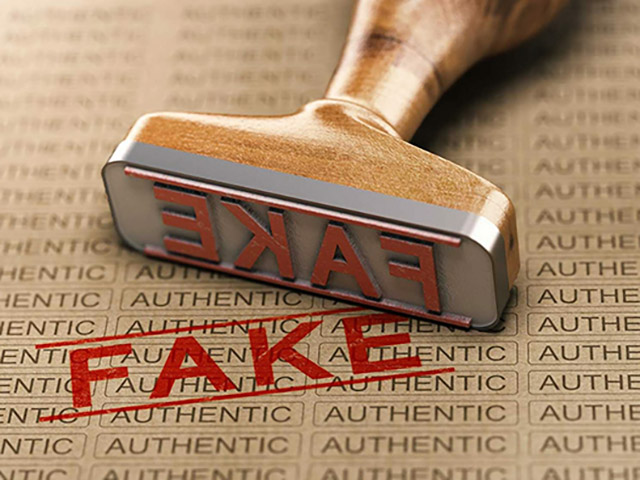How Counterfeiting is Crushing South Africa’s Online Side Hustles
By Industry Contributor 16 September 2024 | Categories: feature articles
By Jason Govender, Candidate Attorney, and Jarred West, Partner, at Spoor & Fisher
The popular e-commerce platform, eBay, is well-known for the breadth and scope of products on offer, including genuine artistic works by the likes of Vincent van Gogh, Salvador Dali and Henri Matisse. Recently artificial intelligence was used to detect 40 allegedly counterfeit paintings for sale on eBay.
eBay has made its stance on counterfeiting crystal clear: “We don't allow counterfeit items or unauthorized copies to be listed on eBay. Items sold using a brand name or a brand logo must be original and made by the brand or manufactured on their behalf. Software, music, movies and other media must be original and not unauthorized copies.” In 2021, and through using artificial intelligence tools, eBay successfully managed to block more than 375 million prohibited items from being published, and removed a further 1.5 million items that were already published from the platform following a review by an eBay Investigator.
.jpg)
Jason Govender, Candidate Attorney, and Jarred West, Partner, at Spoor & Fisher
e-Commerce Counterfeit Concerns
Counterfeit goods clearly threaten the legitimacy of e-commerce transactions. These fake products undermine consumer trust, causing shoppers to question the authenticity and reliability of online marketplaces. Low quality counterfeit items damage the reputation of both the legitimate vendor and the platforms through which the products are distributed.
Furthermore, the presence of counterfeit goods hampers efforts to ensure product quality and safety, ultimately harming consumers as well as the legitimate businesses striving to provide genuine products. Although proactive measures are being implemented by online platforms to safeguard against this, counterfeit goods nevertheless remain a major point of concern for brand holders, governments, consumers and distributors alike.
But what has led to explosive growth in the sale of counterfeit goods through online platforms? Primarily, the problem arises because consumers are not able to physically inspect the goods on offer but there are several other contributing factors:
- Ease of access: an online platform provides a vast and easily accessible marketplace where counterfeit sellers can reach a global audience without the overheads associated with brick-and-mortar stores.
- Anonymity: Online platforms often allow sellers to operate anonymously or under false identities, making it difficult for authorities to track and apprehend counterfeiters.
- Inadequate Regulation and Enforcement: Inconsistent regulations and enforcement across different countries create loopholes that counterfeiters exploit.
- Social Media and Digital Advertising: Counterfeiters use social media and digital advertising to target potential buyers directly, bypassing traditional retail channels and scrutiny.
The South African Position: Side-Hustle Hurdles
e-Commerce platforms have developed over recent years (and were catapulted during the pandemic) into an attractive tool for new ventures, often colloquially referred to as ‘side-hustles’. With rising living standards, growing inflation and the ability to ‘tap’ into a larger consumer base, selling or distributing goods online has become an appealing way to generate an extra income stream. While a secondary source of income is always welcome, its crucial to carefully consider the nature and source of the goods being sold.
Brand owners invest into cultivating a brand that is desirable to their target market and which over time, gains a valuable reputation. But these goods may be too pricey and therefore out-of-reach for many consumers. To meet the demand for lower cost goods the manufacture of and trade in, replicas have surged. These knockoff products 'ride on the coattails' of well-known brands, leveraging the reputation built up by legitimate brand-owners, to sell their imitations at a fraction of the price.
High-end fashion brands are often counterfeited but the problem isn’t limited to these products. The counterfeiting of fast-moving consumer goods is also on the rise, which presents a real risk of physical harm to the consumer, for example when products are ingested or applied topically without having been through the rigorous health and safety processes that are typical for genuine products. Sometimes goods are genuine but have been imported from another country – often known as ‘parallel imports’ or ‘grey goods’. Online sellers will often indicate that their counterfeit products are grey goods as a means to circumvent any difficult questions regarding the origin of their products.
If found guilty of dealing in counterfeit goods a fine may be imposed on the offender or they may be sentenced to a term of imprisonment and a second or subsequent offence could result in a more severe fine or longer term of imprisonment.
Countering Counterfeits: Steps for Safe Selling
Counterfeit goods are often supplied by organised crime syndicates through unsuspecting retailers. So, when setting up an online shop or distribution platform as a side hustle, remember to be careful about how you source your goods. Take proactive steps to know the details of both the goods you wish to vend and their supplier. If a supply price is too good to be true, it probably is! If possible, verify that the goods originate from an authorised distributor.
In summary, when setting up an online sale/distribution platform as a side hustle be vigilant against selling counterfeit goods. Dealing in fakes will undermine the trust of your customers, damage the reputation of your business, and expose you to legal risks and financial penalties. Authenticity is key to building a credible and successful online presence, and maintaining high standards in your product offerings will set you apart in a competitive market.
Most Read Articles

Have Your Say
What new tech or developments are you most anticipating this year?



